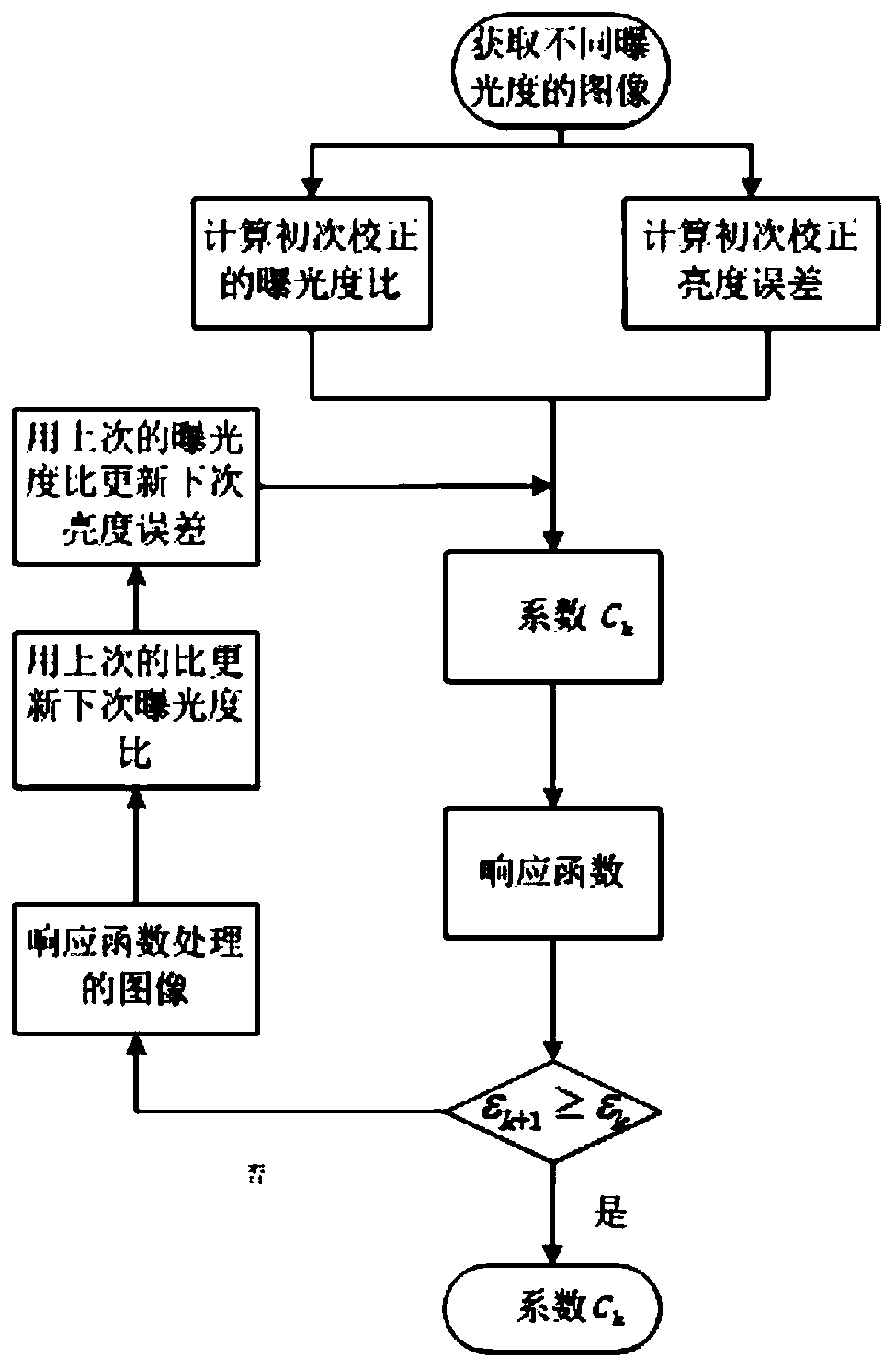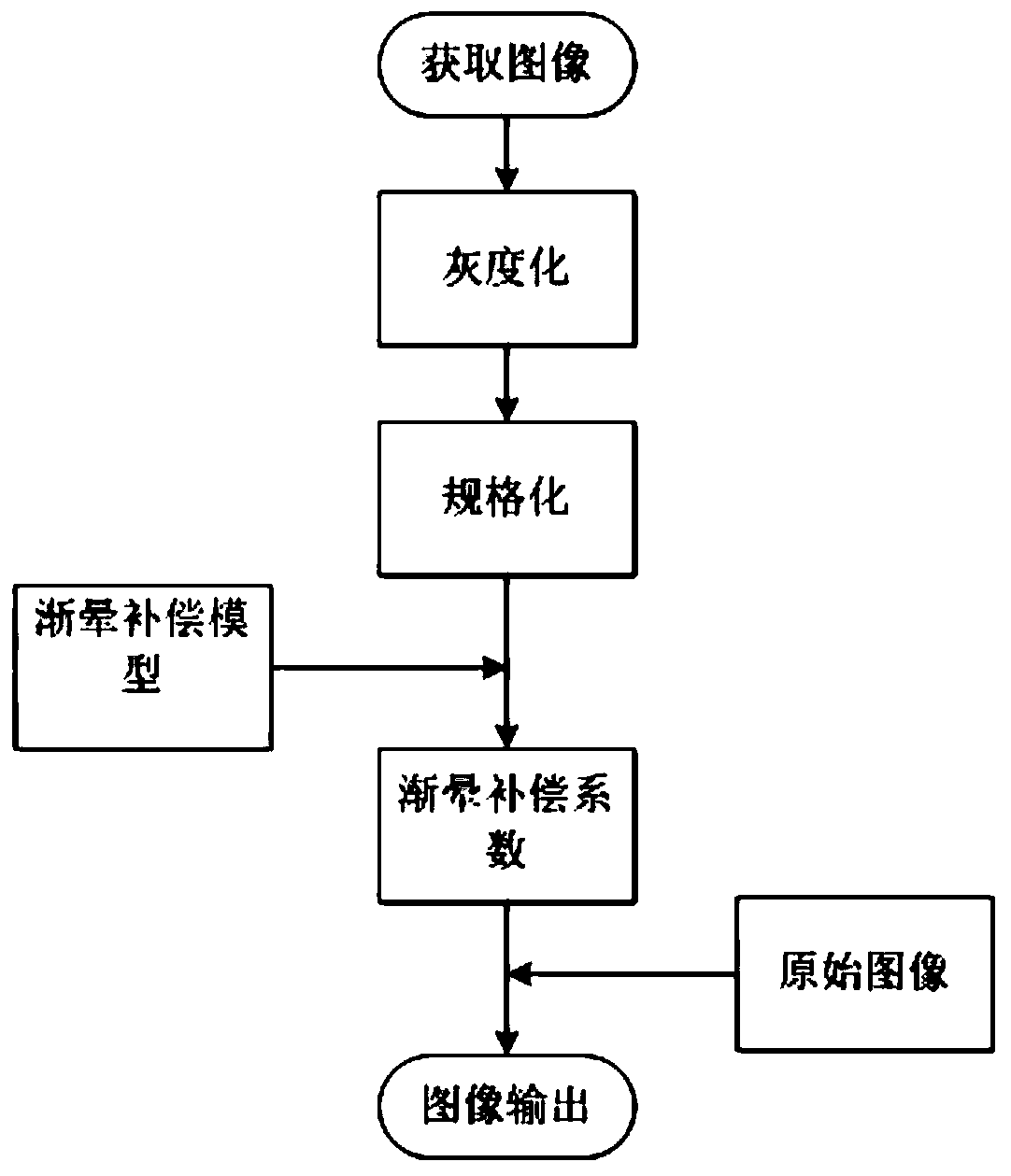Photometric calibration method based on polynomial camera response function and vignetting effect compensation
A camera response and calibration method technology, applied in the field of image processing, can solve the problem that the iterative conditions are not good for the algorithm convergence effect, and achieve the effect of complete and stable photometric calibration and real and natural imaging.
- Summary
- Abstract
- Description
- Claims
- Application Information
AI Technical Summary
Problems solved by technology
Method used
Image
Examples
Embodiment
[0110] The specific implementation process of camera response function optimization, such as figure 1 Shown:
[0111] 1. In the same scene, use the same camera to change the exposure parameters to shoot 8-10 images as the experimental group, and the number of images is set to Q;
[0112] 2. Determine whether the image is a grayscale image, if not, convert it to a grayscale image;
[0113] 3. Arrange and save the image in order from dark to bright, and obtain the gray value data G(x, y) of each pixel on the image (can be generated directly), x, y are the positions of the pixels, that is, Obtain the third-order array data with the length and width of image pixels as the first and second order, and the image serial number as the second-order dimension;
[0114] 4. Record the exposure value information of each image, and divide them sequentially to obtain Q-1 exposure ratio information The first-order array data obtained for the first time is used as the initial exposure ratio...
PUM
 Login to View More
Login to View More Abstract
Description
Claims
Application Information
 Login to View More
Login to View More - R&D
- Intellectual Property
- Life Sciences
- Materials
- Tech Scout
- Unparalleled Data Quality
- Higher Quality Content
- 60% Fewer Hallucinations
Browse by: Latest US Patents, China's latest patents, Technical Efficacy Thesaurus, Application Domain, Technology Topic, Popular Technical Reports.
© 2025 PatSnap. All rights reserved.Legal|Privacy policy|Modern Slavery Act Transparency Statement|Sitemap|About US| Contact US: help@patsnap.com



